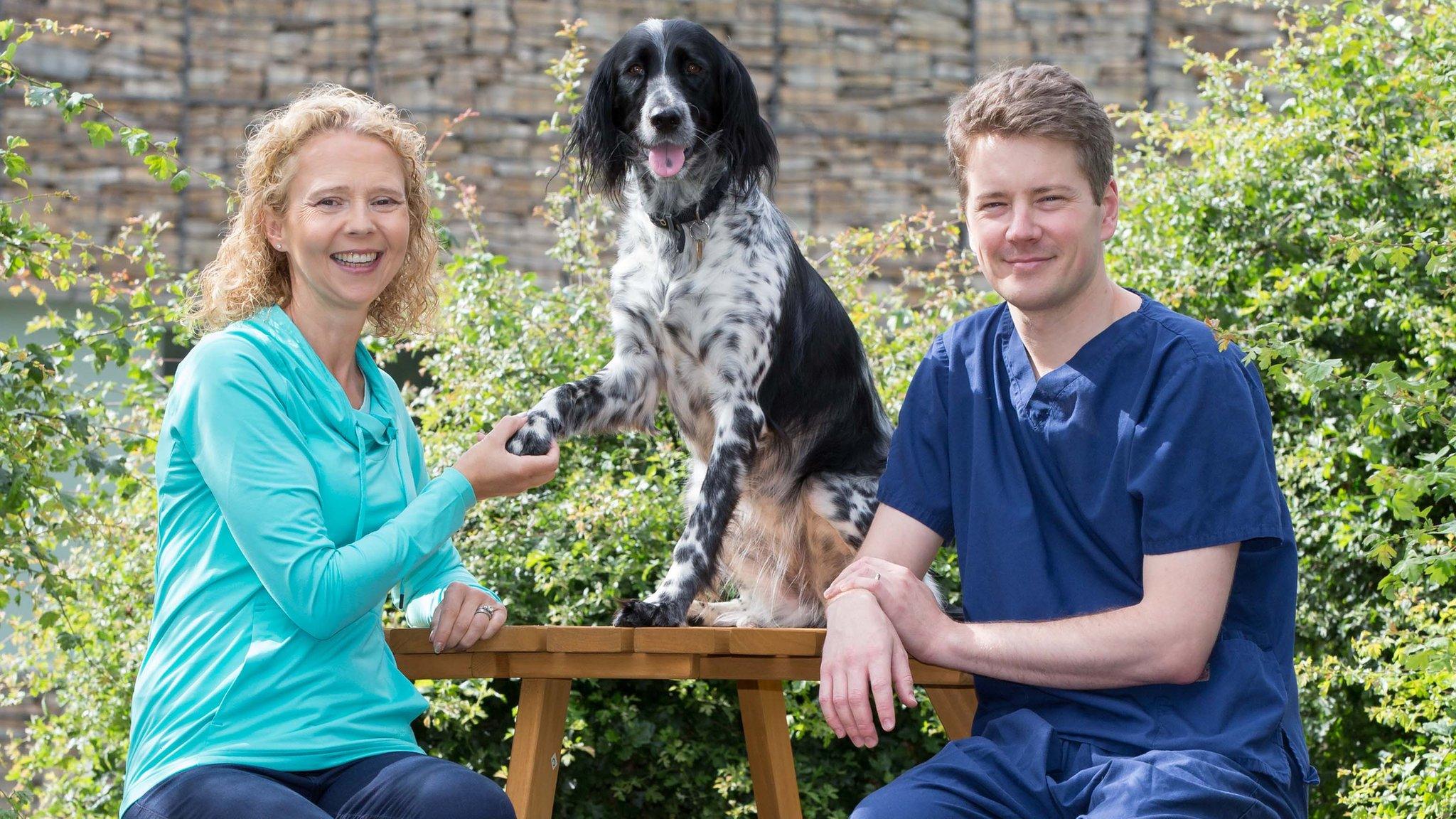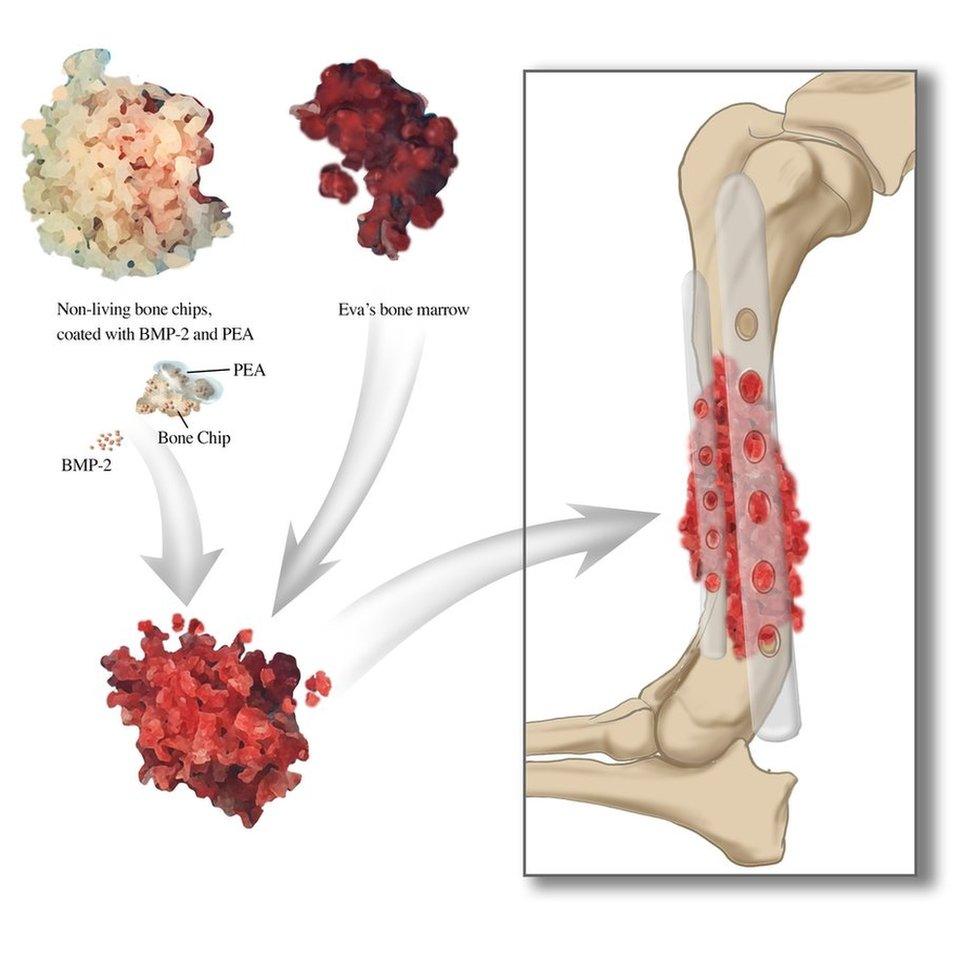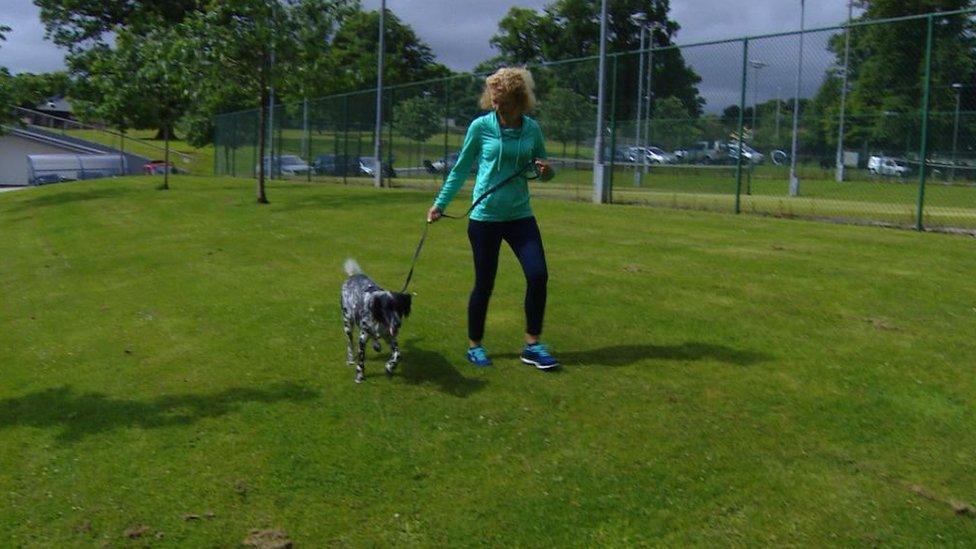Dog's leg saved by bone technology for landmine victims
- Published

Eva with owner Fiona Kirkland and surgeon William Marshall
Vets at the University of Glasgow have saved a dog's leg from amputation using bone-growing technology originally designed to help landmine victims.
Two-year-old Munsterlander Eva broke her leg when she was hit by a car last year and the injury failed to heal.
Amputation seemed inevitable, but Eva's vet used the untested technique that encourages new bone tissue to grow.
Bone chips mixed with a special formula were placed in her leg and the dog is now on the way to a "full recovery".
Research into the technology was funded by Sir Bobby Charlton's landmine charity Find A Better Way.
Project leaders Prof Manuel Salmeron-Sanchez and Prof Matt Dalby began work in January to develop synthetically grown bone tissue for use by trauma surgeons in the future treatment of landmine blast survivors.
The team is also based at Glasgow University, but the university said Eva's vet, William Marshall, found out about the research project "by chance".
Mr Marshall had been treating Eva at the university's small animal hospital, but a persistent infection had forced vets to remove bone tissue from the dog - leaving her with a 2cm (0.8in) gap at the top of her right foreleg that would not regenerate.

The bone-growth technique that Mr Marshall wanted to use - a new way of delivering a naturally occurring protein called BMP-2 - had not previously been tested on dogs or humans.
The protein, which is held in place by common household substance called PEA, causes bones to grow.
Mr Marshall, clinician in orthopaedic surgery at the university's School of Veterinary Medicine, placed the bone chips mixed with BMP-2 in the gap in Eva's front leg.
He said: "Eva is an energetic and otherwise very healthy dog. Amputating her leg would have significantly affected the way that she walks and runs, but without the treatment provided by Manuel and his team there would really have been no other option.
"We are delighted with the results, and are looking forward to developing the use of PEA and BMP-2 further in veterinary medicine."

Eva is now on the way to a full recovery
Fiona Kirkland, Eva's owner, said she was "absolutely thrilled" with her pet's recovery.
"When we heard about an experimental treatment that might help her, we had no idea it was connected to such an important project," she said.
"It is amazing to think that the treatment used to heal Eva's leg will help researchers one day repair the bones of landmine blast survivors."